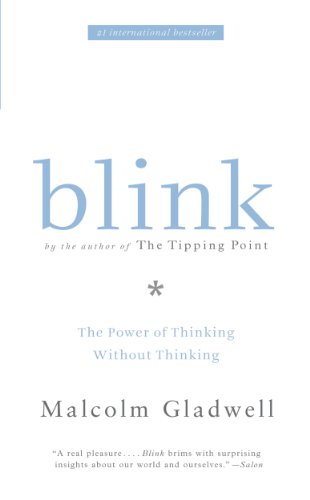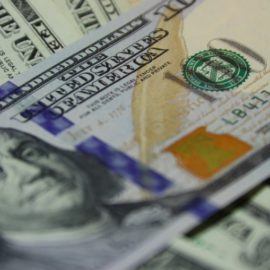

This article is an excerpt from the Shortform summary of "Blink" by Malcolm Gladwell. Shortform has the world's best summaries of books you should be reading.
Like this article? Sign up for a free trial here .
What is subconscious bias? How do our actions reflect prejudices that are either subconscious or unconscious? Can the Harvard unconscious bias test tell us the biases our conscious minds refuse to acknowledge?
Subconscious bias is a prejudice we’re unaware of, and the Harvard unconscious bias test, officially known as the Implicit Association Test, is a tool used to understand how unconscious associations affect our beliefs and behavior. Learn how subconscious bias affects our everyday actions and how the Harvard unconscious bias test can help you identify your unacknowledged prejudices.
The Dark Side of Intuition: Subconscious Bias
In order to recognize the power of the unconscious mind’s thin-slicing (unconscious decision making), we need to accept both its light and dark sides:
- Light side: Thin-slicing allows us to judge a person or situation from a first impression. We don’t need long hours or months of study.
- Dark side: Thin-slicing can act on deep-seated, subconscious biases, leading us disastrously astray.
Before we look at the Harvard unconscious bias test, let’s explore how these unconscious prejudices arise and what we can do to mitigate subconscious bias.
Superficial Thin-Slicing Leads to Subconscious Bias
Thin-slicing doesn’t always serve us. Sometimes, we make superficial snap judgments. This leads to subconscious bias.
Usually, thin-slicing helps us get below the surface details of a situation to find deep patterns. But stress, time pressures, and ingrained associations can interrupt this deep dive, leaving us with a snap judgment made on irrelevant surface details.
Example of Subconscious Bias: The Case of Warren Harding
For example, before he became the 29th president of the United States, Warren Harding had an undistinguished political career. He wasn’t particularly smart, rarely took a stance on (or interest in) political issues, gave vague speeches, and spent much of his time drinking and womanizing.
Still, Harding climbed the political ranks and became president. He’s widely regarded as one of the worst presidents in history. How did he get the position in the first place?
He looked like a president. His distinguished appearance and deep, commanding voice won voters over. They unconsciously believed good-looking people make competent leaders. Harding’s handsomeness triggered associations so powerful they overrode voters’ ability to look below the surface, at his qualifications (or lack thereof). These associations are, by their nature, irrational. This is a consequence of subconscious bias.
Conscious Versus Unconscious (or Subconscious) Attitudes
Sometimes, our snap judgments aren’t only the product but the root of prejudice and discrimination. Our attitudes about race and gender, for instance, operate on two levels.
- Our conscious attitudes are what we choose to believe and how we choose to behave. They are the source of our deliberate decisions.
- Our unconscious attitudes are the unthinking, automatic associations we have regarding race and gender.
We can’t choose our unconscious attitudes. We may not even be aware of them. Our experiences and schooling, the lessons we were taught as children, and the media all form our unconscious attitudes and subconscious biases. These attitudes may differ dramatically from our conscious ones.
For example, we would never say that we believe tall people make better leaders than short people. But the numbers indicate that being short is as much of a stumbling block to corporate success as being a woman or a minority. We believe tall people make good leaders, even if we don’t know we believe it. Consider these statistics:
- In the U.S., 14.5% of men are six feet tall or taller; 3.9% are six foot two or taller.
- In Fortune 500 companies, 58% of CEOs are six feet tall or taller; 33% are six foot two or taller.
We have an unconscious association between leadership and tallness and a subconscious bias toward tall people. We make snap judgments about our leaders based on their height. That stereotype is so strong that it overrides other qualities or considerations.
The Dangers of Subconscious Bias
Many psychologists use the Implicit Association Test, also known as the Harvard unconscious bias test, as a tool in their attempts to understand how unconscious associations affect our beliefs and behavior. (You can find the IAT online at www.implicit.harvard.edu if you’re interested in learning more about your own unconscious associations and subconscious bias.)
Subconscious Bias Regarding Gender
Statistics from the administration of the Harvard unconscious bias test demonstrate that, regardless of our stated beliefs, most of us pair the concept of “male” with the concept of “career,” and pair “female” with “family.” When the Harvard unconscious bias test jumbles them, our reaction times are slower.
For example, when given two categories—Male/Career and Female/Family—we can sort words like “laundry,” “entrepreneur,” “merchant,” and “siblings” pretty quickly.
But change the categories to Male/Family and Female/Career, and the conscious mind has to course correct for the unconscious mind, which still yokes “male” with “career” and “female” with “family.” This slows down our reaction times. It also demonstrates subconscious bias.
Although we may not like it or consciously agree with it, most of us have a moderate or strong “automatic male association” when it comes to the workforce. In other words, we have a subconscious bias toward males in the workplace.
Subconscious Bias Regarding Race
Regardless of their stated beliefs, more than 80% of people who take the Harvard unconscious bias test have “pro-white associations.” In other words, it takes slightly longer for most people to put words like “glorious” and “wonderful” in the “African American” category than to put words like “hurt” and “evil” in the same category.
This doesn’t just apply to test-takers who aren’t African American—50% of more than 50,000 African Americans tested have pro-white associations.
In the U.S., where we’re still bombarded by messages implicitly linking “white” with “good,” it’s hard to develop unconscious attitudes about race that match our conscious ones. This leads to a subconscious bias toward whites.
The implications of this mismatch are unsettling. When we act automatically, we depend on our implicit attitudes. Studies show that if you have strong pro-white associations, you’ll act differently around someone who’s Black. You probably won’t even be aware that you’re behaving differently. The cues will be subtle:
- You might not lean toward or directly face him or her.
- You might stand further away.
- You might make less eye contact.
- You might stumble over your words more.
- You might smile and laugh less.
- You might not be as expressive as you would be around a white person.
Subconscious biases alter our experiences. These experiences then affect our future subconscious biases, resulting in a vicious cycle.
For example, say you’re a Black male interviewing for a job opening. Your interviewer is a white male with pro-white associations.
Your unconscious mind picks up on the interviewer’s subtle distance and lack of eye contact. Consequently, you lose confidence. Your interviewer’s unconscious mind picks up on your lack of confidence. He gets the gut feeling that you’re not competent or serious enough about the job. This reinforces the interviewer’s unconscious, pro-white associations and reinforces his subconscious biases.
Our subconscious biases regarding racial and gender attitudes matter, regardless of what our stated, conscious attitudes are.
Can We Change Our Subconscious Biases?
Yes, but it takes effort. It’s possible to fight the Warren Harding error, to retrain your implicit assumptions by being aware of them and actively using your conscious mind to counter them. One car salesman has successfully used this strategy to ward off his subconscious biases about customers.
Subconscious Bias in Car Sales
Car salesmen have a history of prejudging customers. A 1990s study of how the race and gender of a customer affect the car price found that Chicago car dealers, spread over 242 dealerships, offer white men the lowest prices (an average of $725 above what the dealer paid for the car), followed by white women ($935 above invoice), Black women ($1,195 above invoice), and finally, Black men ($1,687 above invoice).
You might think this is a conscious choice on the part of the dealers. They assume that anyone who isn’t a white male is a sucker, stupid enough to pay a car’s sticker price.
But the actors playing the part of customers in the study made it very obvious that they weren’t stupid. Researchers instructed all “customers,” regardless of race or gender, to make it clear that they were educated, had successful careers, and lived in wealthy neighborhoods. Black and female customers bargained for an average of 40 minutes, demonstrating that they were not willing to pay the sticker price. (White men didn’t have to negotiate at all.)
The conscious minds of the dealers must have told them that these people clearly weren’t suckers. But their unconscious minds weren’t convinced. Chicago car salesmen unconsciously link the concept of a “lay-down” with women and minorities. This is an example of subconscious bias.
If for no other reason than to make more sales, it’s in the seller’s best interest to consciously fight subconscious biases. At least one man has caught on. Counter to general car-selling wisdom, the best salesman at one New Jersey dealership quotes everyone the same price. His reputation for being fair gets him many referrals, which make up a third of his business. He sells about 20 cars per month, double the average of most salesmen.
This salesman attributes his success to his conscious belief that you can’t know which customer has the most money to spend or which one will be a lay-down. He understands the errors of unconscious attitudes that make judgments about customers, and makes a conscious effort to counter them.
The Power of Priming in Fighting Subconscious Bias
The statistics showing how much our unconscious attitudes influence our actions are grim. We can’t choose our unconscious attitudes and subconscious biases. But does this mean we can’t change them?
The technique of “priming” gives us hope. Priming demonstrates that our unconscious minds are extremely suggestible. This makes the unconscious vulnerable to negative suggestions, but it also makes it available for positive suggestions. Priming sheds light on one way to influence otherwise inaccessible unconscious processes.
Priming happens when your associations with one thing affect your reaction to something else. This makes more sense in context, so let’s look at some priming experiments that demonstrate how easily swayed the unconscious mind is.
(Shortform note: The concept of priming is controversial, since many of the studies have failed to replicate the original findings, suggesting the studies were either cherry-picked to yield the best results or, at worst, fabricated. At best, priming is a more complex phenomenon than originally thought.)
Priming Experiment #1
This experiment involved what’s called a “scrambled-sentence test.” It works like this: As quickly as possible, you read a set of five words and use four of them to make a grammatically correct sentence.
Example: from are Florida oranges temperature
- A grammatical sentence might read: Oranges are from Florida.
Example: shoes give replace old the
- A grammatical sentence might read: Replace the old shoes.
The experimenters divided undergraduates into two groups:
- Group A’s sentences were sprinkled with “rude” words like “aggressively,” “bold,” “disturb,” and “infringe.”
- Group B’s sentences were sprinkled with “polite” words like “respect,” “appreciate,” “patiently,” and “yield.”
There were only enough of these themed words to trigger the unconscious mind. The students didn’t consciously pick up on the pattern.
When they were finished unscrambling the sentences, the students were instructed to walk down the hall and talk to the researcher in charge of the experiment. But when the student got there, a confederate was blocking the doorway to the researcher’s office and was deep in conversation with the researcher. The experimenters wanted to know how long the students would wait before interrupting the conversation.
Results:
- Group A, primed with “rude” words, interrupted after an average of 5 minutes.
- 82% of students in Group B, primed with “polite” words, never interrupted at all. (The committee that approved the experiment stipulated, presumably for ethical reasons, that the researchers couldn’t keep the students waiting for longer than 10 minutes.)
This experiment implies that subtle environmental cues can make us ruder or more polite in certain situations. We might have a subconscious bias toward politeness or rudeness, but priming can change this subconscious bias.
Priming Experiment #2
Psychologists asked Black college students to take a test with 20 questions from the GRE. They divided the students into two groups:
- Group A had to identify his or her race in a pre-test question.
- Group B did not have to identify his or her race.
Results:
Students who had to identify their race got half as many questions right as the group that didn’t answer a pre-test question about race.
This is a big deal. Scores on standardized tests like the GRE can make the difference between attending your first-choice school and not going to graduate school at all.
One reason white students may do better on these kinds of tests is that they are primed with the idea of “smart.” Black students may be subconsciously reminded of negative stereotypes when they have to identify their race. They also may feel pressure to represent their race well on the test, increasing testing anxiety.
These experiments show us that priming can have devastating effects on our unconscious attitudes and, consequently, our lives. But they also show us a path forward. If we can negatively influence our subconscious biases, we can also positively influence them.
Summary: What Can You Do to Change Your Subconscious Biases?
Unconscious discrimination is harder to see, and therefore harder to rectify, than blatant discrimination. How do you fix something that happens below the level of conscious thought?
1. Use priming to your advantage to fight subconscious biases.
For example, looking at pictures of Martin Luther King, Nelson Mandela, or Colin Powell before taking the IAT changed people’s reaction times. They strengthened their association between “African American” and “good.”
2. Change your experiences to fight subconscious biases.
Your subconscious biases are based on your environment and accumulation of prior experiences. To change your subconscious biases, you need to change your environment and experiences.
When you become aware of an implicit association that’s discriminatory—perhaps you take the race section of the Harvard unconscious bias test and you’re one of the 80% who have a white preference—alter the association by spending time with people who counter your implicit biases. Read books, watch movies, and become familiar and comfortable with cultures that your unconscious mind discriminates against. You’re training your unconscious mind to change its opinion.
———End of Preview———

Like what you just read? Read the rest of the world's best summary of "Blink" at Shortform . Learn the book's critical concepts in 20 minutes or less .
Here's what you'll find in our full Blink summary :
- How you can tell if a marriage will fail, within 3 minutes
- Why your first impressions are usually surprisingly accurate
- The dark side to making first impressions, and how to avoid the,






